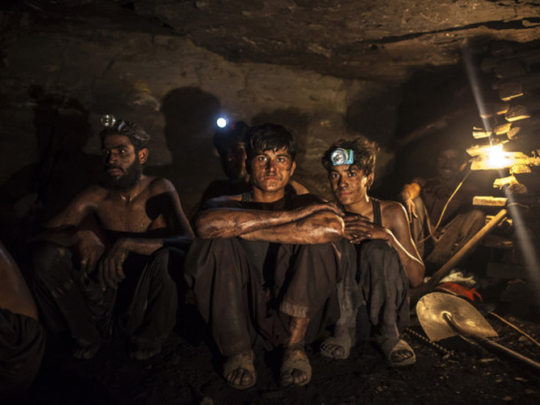
The world’s perception of Pakistan is often a negative one, but there is some good news from the South Asian nation: it’s a growing economy with the potential to become even stronger. “Conditions at the beginning of [the] 2014-15 [fiscal year] are certainly better than a year ago,” says Ashraf Mahmood Wathra, Governor, State Bank of Pakistan (SBP).
On track for growth
The global community is also optimistic. David Lipton, First Deputy Managing Director and Acting Chair of the International Monetary Fund (IMF), said last month: “Macroeconomic conditions are improving, fiscal consolidation remains broadly on track, efforts to boost foreign reserves are bearing fruit and should continue, and the banking sector remains financially stable and profitable. Energy policy reforms are welcome.”
SBP-held foreign exchange reserves amounted to $9.4 billion (about Dh34.5 billion) early last month.
According to the SBP’s Monetary Policy report in July — at the end of the fiscal year (FY) — the country’s real GDP grew by 4.1 per cent, largely as a result of reforms in the energy sector. This was supported by a revival of growth in manufacturing. According to the report, “the government has set a target of 4.9 per cent of GDP for the fiscal deficit of FY15, about 0.9 per cent below the revised FY14 estimate of 5.8 per cent of GDP. Also, a little more than 80 per cent of the projected deficit is envisaged to be financed from external and non-banking sources.”
The Pakistan Bureau of Statistics expects similar growth this year. Inflation is forecast at 9.5 per cent for the current FY, which is expected to decline to 7.5 per cent next year, in the wake of a progressive macroeconomic environment and a favourable commodity outlook.
According to a survey by brokerage firm Topline Securities, foreign investors continued to pour funds into Pakistan’s stock market last month, despite political uncertainties and slower activity due to Ramadan. Karachi Stock Exchange (KSE) put foreign investments in July at $68 million, causing the benchmark KSE-100 Index to rally 3 per cent and adding to the market gaining 21 per cent in the first seven months of the year.
Foreign participation should receive further impetus from government plans to privatise state-owned enterprises in sectors such as oil and gas and banking in coming months.
The government is also encouraging alternative energy projects in the country and extending opportunities to foreign investors. China, for instance, has made a $31.5 billion investment in energy and infrastructure projects in the country and port expansion for Gwadar. Projects worth $15-20 billion are to be brought to fruition, which include the Lahore-Karachi highway, Gwadar Port expansion and energy sector projects to be launched in Gadani as well as six coal projects near Thar coalfield. In May, the two countries also signed an agreement to start a metro in Lahore. The 27.1-kilometre track is expected to cost $1.27 billion.
Regional development
The Asian Development Bank sees uncertainty in agriculture due to rains being partly compensated by the pickup in large-scale manufacturing, which grew by 6.7 per cent during the first six months of FY14, three times higher than the same period a year earlier.
Furthermore, the country should benefit from an agreement signed last month to construct a gas pipeline criss-crossing Turkmenistan, Afghanistan, Pakistan and India (TAPI). A US State Department spokesperson told news service PTI, “The US supports TAPI because we believe it has the potential to be transformative for the future of the entire region.”








